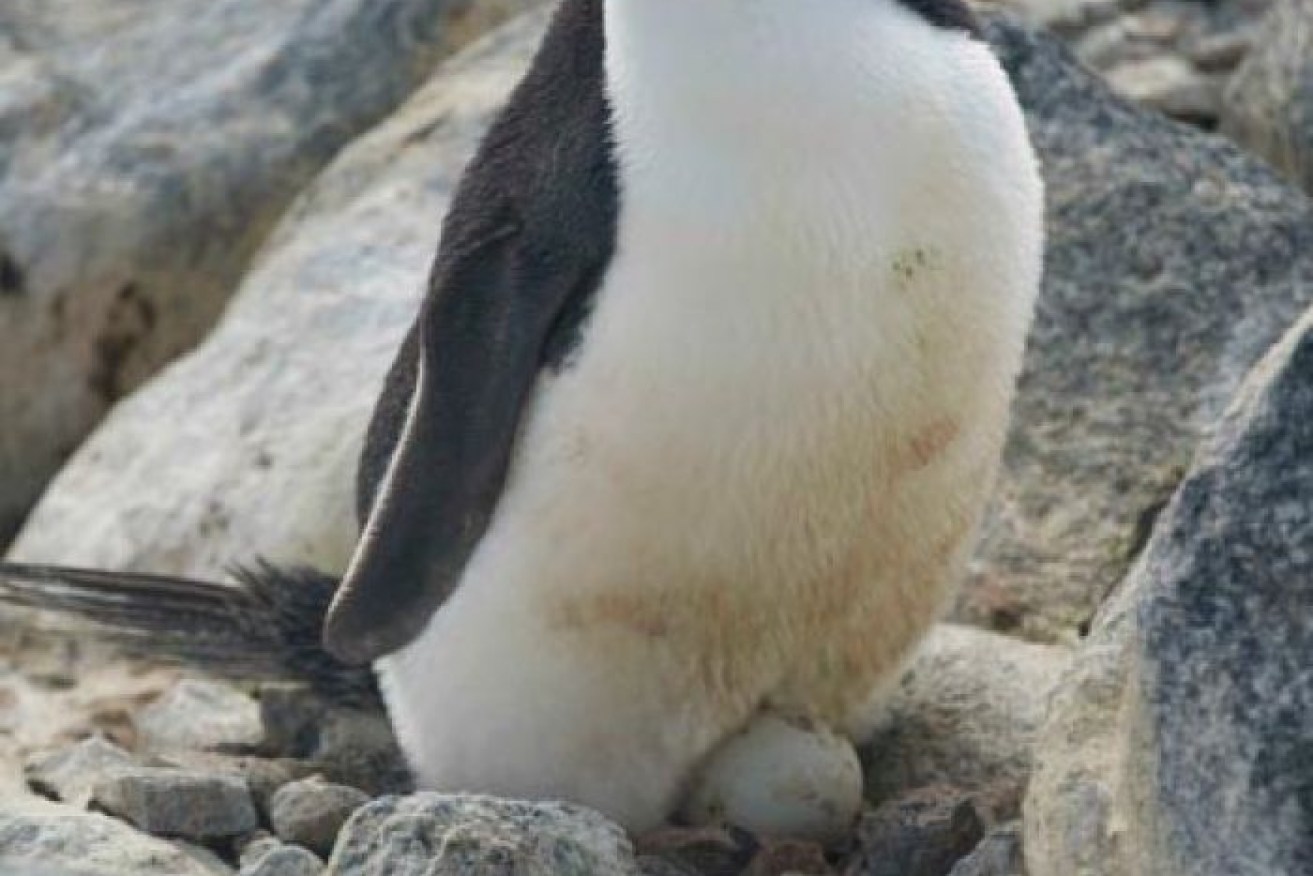Iceberg nearly wipes out penguin population

UNSW/Chris Turney
A once-thriving penguin colony observed by an Australian explorer in Antarctica more than 100 years ago is being decimated as a result of a giant iceberg in an event that could be repeated as the climate warms, scientists say.
The Adelie penguin colony at Cape Denison at Commonwealth Bay was described by Sir Douglas Mawson during the Australasian Antarctic expedition in 1912.
Biologists in that expedition profiled the colony in depth, estimating the population to be between 100,000 and 200,000 – enough for Sir Douglas to complain about the loud noise.
• Seal spotted 19km upstream in Yarra River
• Tourist gets up close and personal with massive crab
• Orangutans learn to play video games at Melbourne Zoo
But the latest numbers, recorded by scientists from the University of New South Wales (UNSW) who visited the cape between 2013-14 to study the local ecosystem, showed the population had dropped to just 5520 pairs.
That was down from 160,000 birds recorded in 2011.
The team, led by Professor Chris Turney, found the crash in penguin numbers was directly due to a giant iceberg that had grounded itself close to the cape and was, in turn, blocking the penguins’ access to open water and food.
That has not only led to more penguins dying, but also less birds choosing to return to mate.
“It was heartbreaking to see. The place is dying. It just is dying,” Professor Turney said.
“When we got there, one of the first things that struck us was it was incredibly silent. It’s eerily quiet.
“We found there’s been this catastrophic collapse in the penguin population. They’re just not getting enough food to maintain that colony.”
Colony starving after enormous iceberg blocks bay
The giant iceberg, called B09B, arrived in Commonwealth Bay in 2010 and grounded itself opposite Cape Denison, where Sir Douglas had established base camp for the 1912 expedition.
With an area of 2900 square kilometres, Professor Turney said B09B was “the size of the ACT [or] of Luxembourg”.
“Calling it an iceberg doesn’t really do it credit. It’s so big it’s a small country, basically, roaming the landscape,” he said.

The penguins have a 65-kilometre journey to the sea and back, leaving them too little energy to survive the eight days while their mate is at sea. Photo: UNSW/Chris Turney
It had calved off the Antarctic ice sheet into the Ross Sea and begun moving in 1997, “wreaking havoc [and] smashing things” as it went.
Professor Turney said its new location in Commonwealth Bay was trapping katabatic winds – or “frigid, dry air masses that roll off the Antarctic plateau” – in Cape Denison and causing sea ice to form.
“[The winds] chill the surface of the ocean, turn it into sea ice, then the winds blow that ice out to sea,” he explained.
“[But] because this enormous iceberg is there, that sea ice has formed and it’s stayed trapped.”
Professor Turney said that extra sea ice now blocked the penguins’ access to open waters and food.
“Normally what they would expect to do is go down to the edge of Cape Denison and just drop into the water, a couple of hundred metres,” Professor Turney said.
Now the penguins need to journey more than 60 kilometres to get to and from open water, meaning some are not able to survive or maintain their chicks.
“When we went round you could see lots of broken eggs, lots of dead chicks, so they had hatched but there wasn’t enough food,” Professor Turney said.
“Every year that goes by, fewer and fewer birds are going to be able to survive, and fewer and fewer will be able to return.
“One can envisage if it stays like this for 10 or 20 years it could be the end of the penguin colony.”
Similar catastrophes more likely with climate change
Professor Turney said that although icebergs were known to move naturally, we could expect to more movement in the future, with warming waters increasing the number of icebergs calving off the Antarctic ice shelf.
Unlike the Arctic, which is entirely sea ice, Antarctica is a continent covered by an ice sheet, surrounded by sea ice.
“Some of it melts, but a lot of the mass lost from Antarctica is these big calving events, where you get these massive bergs breaking off and drifting out into the ocean,” Professor Turney said.
“Under a warming planet we might anticipate more icebergs in the Southern Ocean and so these events might become more common.
“From a scientific point of view, this extreme change is fascinating. It’s a natural experiment to try and understand what the future might portend.”
-ABC








